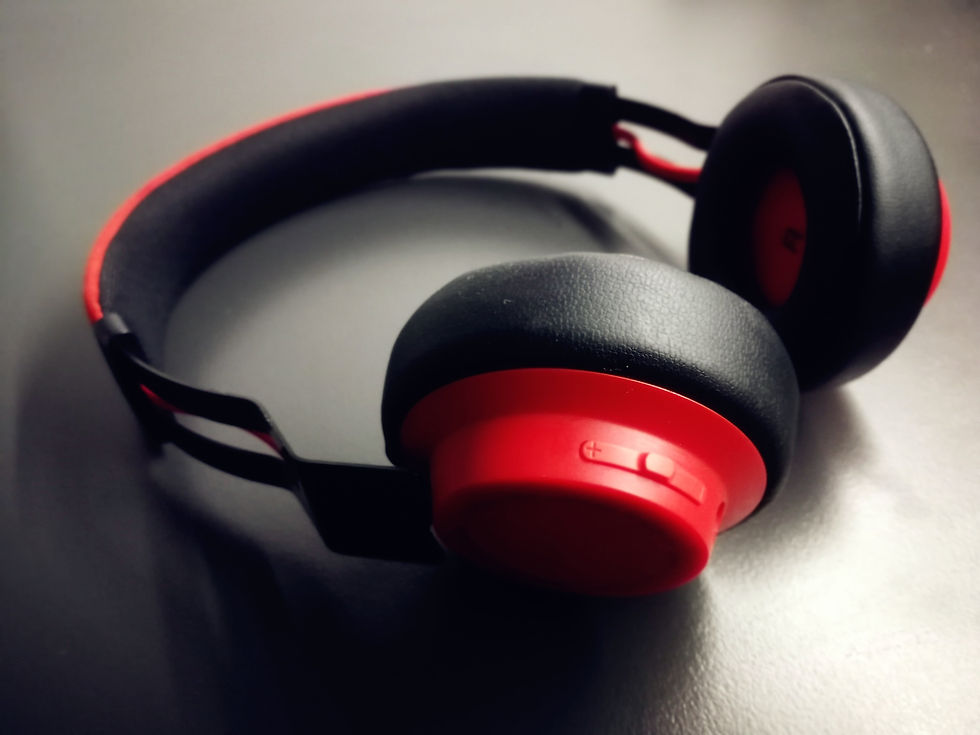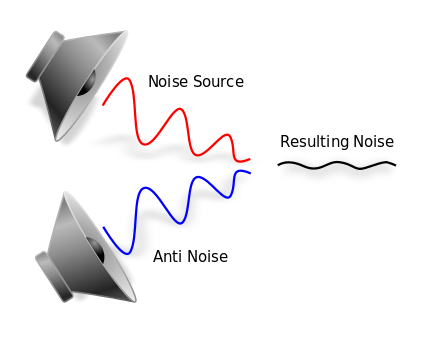You are in your home trying to enjoy a nice afternoon for yourself. You are sitting down with the computer on your lap trying to watch a show, but your family is in the house. A couple of shrieking kids make it impossible for you to enjoy yourself. Maybe it´s the neighbors that are being loud or a construction site across the street. Either way, you want some peace and quiet.
You look online and find a pair of noise-canceling headphones, and think about buying them. Just below them, however, is another, cheaper, pair of headphones. These are noise-isolating instead of canceling.
This begs the question:
What’s the difference between noise cancellation and isolation? Are they the same thing, but marketed differently?
Well no. There is a tangible difference between noise canceling and noise isolating headphones.
What’s the difference between noise canceling and isolating?

Noise cancellation headphones take a “high-tech” approach to protect you from unwanted noise. They counteract external sounds by emitting their own. The microphone on the headset detects the ambient noise of your room and instruct the speakers to make a sound on the opposite wavelength.
The result is that you hear neither, not the external noise, nor the sound made by the speakers. This is called “active” noise cancellation because the headset proactively adapts to the commotion.
Noise isolation, or passive noise cancellation as it is also called, is simpler. These headphones physically block external soundwaves by completely encasing your ears and having padded earmuffs, among other things.
They are less about counteracting noise and more about preventing it from reaching you in the first place.
To use an analogy:
Imagine that you are in your bedroom at night and the neighbor is having a party. You want to sleep, but the music is keeping you awake.
Passive noise cancellation (or noise isolation) is putting your pillow around your ears to try and block the sound.
Active noise cancellation is the equivalent of turning on the TV or putting music of your own to cancel out your neighbor’s racket.
How do they work?
Noise isolation is simple. It blocks unwanted ruckus from entering your ear by putting the headphones between you and it. That´s why the most expensive noise cancellation headphones tend to be big and bulky.
Active noise cancellation is trickier. The built-in mic detects an unusually loud noise coming from far away (meaning, not your own voice). The software digitally calculates the amplitude and wavelength of the noise. With this information, the headset produces its own “anti-sound” (called antiphase in scientific terms) that negates the external sound. I know that this sounds like something from a sci-fi book, but that´s how they work. This “anti-noise” doesn’t affect the functionality of your headphones. You will still be able to listen to music and whatever else you might want to.
Which is better?
This one is tricky to say. Neither is better in absolute terms. They each have their quirks and is up to you to decide which one is best for you:
Pros and Cons of Noise Cancelation headphones:

Pro: Good at blocking constant sounds:
Due to the predictive nature of the software used in these headphones, they excel at blocking continuous noises. This means that they are good for canceling out airplanes engines, traffic and such. In other words, they are great at blocking out annoying ambient sounds.
Con: Bad at blocking sudden, high pitched noises:
Because these headphones rely on their ability to detect and predict unwanted sounds, they struggle with short and high pitched noises. Things like screaming children, sudden laughter, and barking dogs give them a run for their money. By the time they start emitting their “anti-noise”, the sounds will have already ended, and your peace will have already been disturbed.
Cons: They emit a low sizzle:
The sound that these headphones make to block out external noise is not unnoticeable. You can hear a low hiss or sizzle while the technology works its magic. Some people find this hissing to be almost as annoying as the noise they are trying to block. Others don´t notice it at all. I´m willing to bet that more than a few of you who own active noise-canceling headphones hadn’t heard any sizzle before reading this paragraph. If that´s the case, I´m sorry. You should consider trying out this type of headsets before buying, to see if it bothers you or not.
Con: They need power
For wireless headphones, using noise cancellation drains the battery faster. If you run out of charge, not only will you be unable to listen to music but the headset will stop blocking out noise.
Pros and Cons of Noise Isolation (passive noise cancellation)

Pro: They are good with high pitched sounds.
They’re made to muffle all external sounds, regardless of origin, so they´re better equipped to block sudden noises. If you are bothered by screaming kids, barking dogs and the like, more than distant music or passing cars; this is the better option for you.
Pro: They don´t need a battery:
Because they don´t rely on electricity to cancel out noise, you can use these headphones wherever and however, you want. Even if they aren´t plugged into anything.
Con: They can be uncomfortable and hot.
To block outside sounds, these headphones are big enough to completely encase your ears. Wearing them in a hot room is enough to make you sweat under the heat. The cheaper ones can be quite uncomfortable, as they don´t prioritize an ergonomic design.
Conclusion
In summary, noise-canceling headphones generate their own “anti-noise” to counter unwanted ambient noise. Noise isolation headsets block external sounds by blocking the soundwaves from reaching you, not relying on any technology but their design itself.
Noise-canceling headphones are good at drowning out annoying background noise, but struggle with sudden high pitched sounds and need batteries to work.
Noise-isolating headphones, on the other hand, do well against sudden noises and don’t require power to work.
Personally, I prefer noise isolation headphones, as I´m more annoyed by sudden sounds and I´m always worried about running out of batteries. What about you? Let me know in the comments.
Of course, some high-end headphones offer both protections. They both isolate the ear and have active protection technology to eliminate background noise. If you are interested in this kind of headphone, check out this one right on Amazon, the GSP 500.


Comments